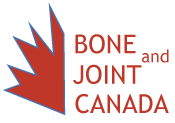Total Joint Arthroplasty Outcome Measures Tookit
0 Comment
The Total Joint Arthroplasty Outcome Measures (TJAOM) Toolkit 2.0
Do you work with patients who have had a hip or knee replacement? Are you unsure which outcome measures to use to help assess, progress or discharge these patients?
Visit the Total Joint Arthroplasty and Outcome Measures (TJAOM) Toolkit 2.0!
This easy-to-use, free, interactive online toolkit provides clinicians with:
- interactive PDF summaries of recommended outcome measures (patient-reported and performance-based tests) appropriate for each phase of the TJA continuum of care
- links to videos for performance-based tests
- a discharge letter template with interpretation guide
- a video providing information about outcome measurement concepts and clinical interpretation
- tables of ratings for all reviewed outcome measures.
Developed by over 40 BC PT clinicians, students and researchers, and initially released in 2014 (TJAOM Toolkit 1.0), it been accessed provincially, nationally and internationally > 40K times and was awarded the Arthritis Health Professional Association Clinical Innovation Award in 2016. It was updated in 2024 (TJAOM Toolkit 2.0) to reflect the current evidence.
